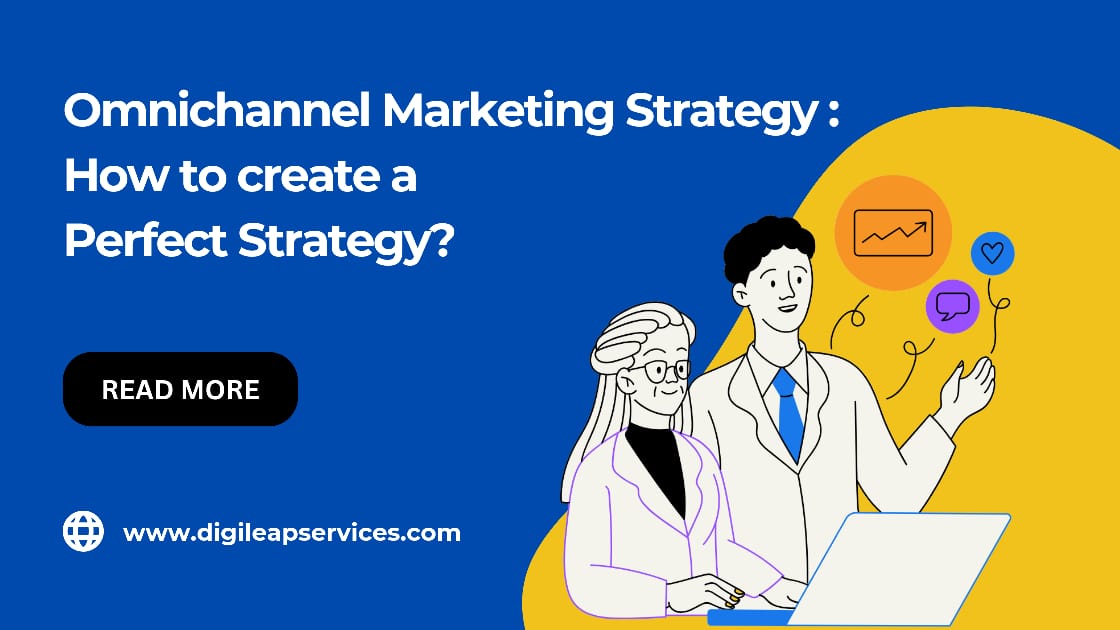Omnichannel Marketing Strategy: How to Create the Perfect Strategy?
Shopping is a distinct experience for everyone, whether you’re using a mobile app or entering a store. What prompted your most recent buy, in your memory? An advertisement, did you see it? you got an email? A display in the mall passed by? Marketing permeates every aspect of your life, whether you realize it or not. Your final choice to purchase an item is influenced by every brand interaction you have along the way. What actions should businesses take to ensure that each stage of the consumer journey is covered?
An omnichannel approach is the solution. Your different marketing approaches can work together effectively and efficiently with the aid of an omnichannel marketing strategy, which can help you combine all of your channels effortlessly.
By implementing a customer-centric strategy and learning how your customers shop, you can connect with audiences across several channels as they consider making a purchase. Customers now have higher expectations of brands since there are more touchpoints that are technology-enabled and because there is a chance for unique buying experiences. As a result, it is crucial that your omnichannel strategy take into account every channel that your firms use.
Understanding Your Audience
An effective multichannel marketing approach is built on a foundation of audience understanding. Businesses must develop and use customer personas to do this. These fictitious depictions of your ideal clients assist you in understanding and meeting their wants. You may specifically target your messaging and offerings to each group by learning more about their demographics, what they prefer, and problems.
It is important to get insights and information about your target market. Utilize analytics tools to track metrics for email campaigns, social media interaction, and website traffic first. Focus groups, feedback forms, and customer surveys can all yield insightful qualitative data. To further your understanding, use competitive research and data from outside sources.
In the dynamic marketing environment of today, adaptability is essential. Preferences, actions, and preferred channels of your audience might change quickly. Keep flexible by analyzing your data frequently, running A/B tests, and adjusting your methods as necessary. Change your content, messaging, and channel mix to reflect your audience’s preferences at any given time.
In essence, the key to a successful omnichannel marketing approach is understanding your audience through customer profiles, data collecting, and adaptation. It enables companies to have closer relationships with their clients and offer more distinctive and interesting experiences.
Setting Clear Objectives
A crucial first step in developing a successful omnichannel marketing strategy is defining your goals clearly. Goals that are specific, measurable, attainable, relevant, and time-bound (SMART) serve as a road map for achievement.
Specific goals, such as a 20% increase in online sales, ensure that everyone is aware of the target. Tracking progress is possible with measurable objectives, such as adding 5,000 new social media followers. Realistic goals are achievable given your resources and abilities, whereas relevant goals, like increasing client loyalty, are in line with your company’s mission. Time-bound objectives specify a specific timeline, such as increasing conversion rates by 10% during the next six months.
Enhancing consumer interaction across channels, increasing cross-channel sales consistency, strengthening customer data integration, and raising customer retention rates are all common goals in omnichannel marketing. For instance, increasing the email open rate by 15% within three months could be a SMART target. You can set a clear direction for your omnichannel marketing activities and track success efficiently with SMART targets.
Seamless Integration
The key to a successful omnichannel marketing strategy is seamless integration. Because it guarantees that clients have a consistent brand experience across all of the different marketing platforms, consistency is essential. Customers establish a stronger, more reliable bond with a company when they experience consistent messaging, design, and service quality across mediums including social media, websites, and physical locations.
Data and technology integration are both essential for a seamless client experience. Businesses may track client interactions and habits thoroughly by connecting the connections between various channels with reliable digital solutions. This makes it possible to use tailored marketing strategies, such as making product recommendations based on past purchases or browsing patterns, which greatly raises customer satisfaction and engagement.
The integration of these systems depends critically on a central consumer database. It houses client data from all touchpoints and acts as a single source of truth. With the help of this repository, businesses may acquire a complete picture of their clients, facilitating targeted advertising, efficient customer support, and precise analytics. To ensure that the consumer’s online experience accurately reflects their most recent involvement, for example, if a customer makes an in-store purchase, that data is quickly updated in the centralized database.
In essence, effective omnichannel marketing strategies depend on seamless integration since it fosters consistency, empowers tailored marketing, and relies on a consolidated consumer database.
Creating the Perfect Omnichannel Strategy
A seamless and consistent customer experience across many channels calls for meticulous preparation and execution when developing the ideal omnichannel marketing strategy. The essential actions to accomplish this are as follows:
1. Know Your Audience:
To start, undertake in-depth market research to learn about the preferences, actions, and pain points of your target audience. Your plan will be guided by this data, which will also help you craft messages that will connect with your audience.
2. Establish Specific KPIs and Goals:
For your omnichannel approach, set up clear, measurable, attainable, relevant, and time-bound (SMART) objectives. These can involve raising brand recognition, generating sales, or enhancing client loyalty. To monitor your success and growth, choose key performance indicators (KPIs).
3. Integrate Data and Technology:
Spend money on powerful data analytics tools and a Customer Relationship Management (CRM) platform to gather and organize customer data. This enables more individualized marketing efforts by enabling insights into client behavior and preferences.
4. Consistent Branding:
Keep your branding consistent across all platforms, such as your website, social media accounts, email marketing, and physical stores (where appropriate). Incorporate your brand identity into your messaging, graphics, and tone of voice.
5. Cross-Channel Coordination:
Organize your marketing initiatives across platforms to give customers a smooth experience. To achieve a cohesive brand experience, this entails coordinating your messaging, promotions, and content.
6. Personalization:
Use client data to deliver offers and information that are tailored to each individual. Based on their interests and previous contacts with your company, customize your messaging to certain customer categories.
7. Mobile Optimization:
Make sure your plan is mobile-friendly given the rising use of mobile devices. Your website and emails should be responsive, and for further interaction, you can look at mobile apps or SMS marketing.
8. Test and Iterate:
Keep a close eye on how your omnichannel approach is performing and be ready to make changes. You may improve the performance of campaigns and content through A/B testing.
9. Customer Feedback:
Request customer feedback via surveys, reviews, and social media. Utilize this input to adjust your approach and deal with any customer experience issues.
10. Collaboration and Training:
Teach your marketing and customer service teams to cooperate. They should be aware of the customer journey and capable of smoothly assisting clients at multiple touchpoints.
11. Compliance and Data Security:
Make sure your omnichannel approach conforms with applicable data protection laws, such as the GDPR or CCPA. Protect client information and be open about how you handle it.
12. Adapt to Trends:
Keep abreast of Market Trends and New Technologies. Be prepared to include new methods or channels that fit changing customer preferences.
Final Thoughts
The proper message may be sent to customers at the right moment with an omnichannel marketing strategy. Organizations may provide a consistent customer experience that takes into account earlier touch points along the consumer journey by utilizing omnichannel marketing. This not only helps to build brand awareness among consumers, but it also improves engagement, boosts revenue and sales, and improves customer loyalty.
With the use of modern marketing performance assessment technologies, businesses can more easily provide consumers with an omnichannel experience by determining the best media mix, targeting, and other factors. Organizations may better decide how to improve marketing and cut down on waste by studying the client journey at every stage.
For much such informative content, visit our website!












